This beautifully flaky and tender gluten free oat flour pie crust is incredibly versatile and works in sweet and savory pastries! An all-butter, whole grain pie crust that is so easy to make and delivers reliably good results every time.

This oat flour pie crust is the easiest, most tender gluten free pie crust that needs just one gluten free flour to make and holds up to sweet or savory fillings. Use it in place of wheat flour pie crust in any recipe you like, from a seasonal fruit pie to a zingy tomato galette, a batch of hand pies, quiches, and more.
This recipe makes enough for a 2-crust, 9-inch pie. Just need one crust? You can halve the ingredient amounts, or use one half now and freeze the other one for whenever you need it. Transfer the pie crust to the fridge to defrost before you roll it out to use in a recipe. I love oat flour pie crust in basically any pie recipe, but especially in maple pumpkin pie, gluten free pumpkin pie, and gluten free apple pie!
Jump to:
Why Use Oat Flour?
Oat flour is always my go-to choice for gluten free baking because it often performs similarly to wheat flour, but is naturally gluten free (note that if you have celiac you may also be sensitive to oats. In that case, I recommend a gluten free flour blend of your choice or another whole grain gluten free flour instead of the oat flour). In pie crust, it is sturdy enough to hold up to a bit of handling but isn't gritty or dry. Oat flour's slight hint of natural sweetness also complements sweet bakes (but it works equally well in savory recipes, such as quiche or a vegetable tart).

Ingredient Notes
Minimal ingredients and whole grain oat flour go into this beautiful gluten free crust. I've outlined what you need below, with the full ingredient amounts and detailed instructions included in the recipe card lower down.
- Oat flour - Whole grain, naturally gluten free oat flour is an ideal choice for pie crust, and it performs wonderfully as the only flour you need in this recipe. If you can't have oats, you could experiment with using brown rice flour or sorghum flour, although I have only tested this recipe with oat flour.
- Granulated sugar - When I make a pie crust for a sweet pastry, such as pie, I add a little sugar. You can increase the amount of sugar from 1 tablespoon to 2 tablespoons if you wish, or use maple syrup instead of the sugar. For a savory dough, you can reduce or leave out the sugar.
- Salt - A little fine sea salt balances the sweetness of the pastry.
- Butter - Always use unsalted butter in pastry so that the salt doesn't overpower the flavor of the dough.
- Ice water - A few tablespoons of ice water help to bring the dough together. Make up the ice water before you start putting together the dough so it's nice and cold when it's time to add it in.
How to Make Oat Flour Pie Crust
Before you begin to make the crust, keep your butter cold in the fridge (or even the freezer if you can plan ahead!). Cold butter plus ice water helps to make the crust super flaky and tender. In addition, you should add the water in slowly so you can hit that sweet spot between just enough water (versus the dough being too dry or too wet). Here's a quick look at how to make this crust:


- Mix dry ingredients: In a large bowl, whisk the oat flour with the sugar and salt.
- Add butter: Add in the cold butter.


- Cut in the butter: Cut in the butter until the mixture resembles coarse crumbs.
- Add water: Drizzle in the ice water 1 tablespoon at a time.

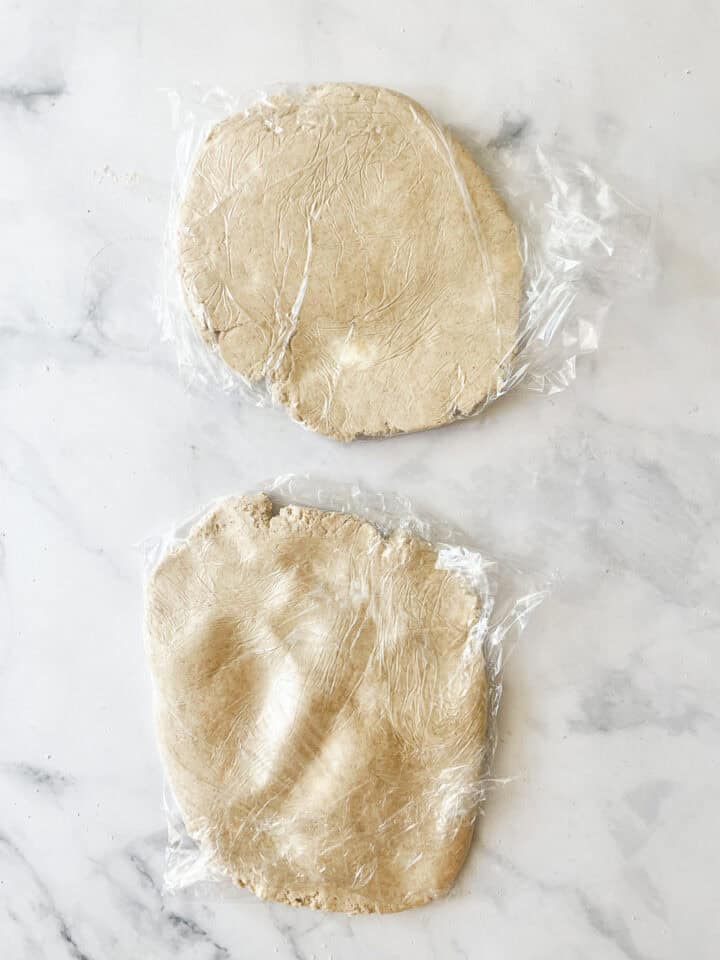
- Mix: Using a fork, mix in the water until the pastry holds together lightly.
- Chill: Divide into two balls, wrap them in plastic, flatten them into discs, and let chill in the fridge for at least 30 minutes before using.

Oat Flour Pie Crust Tips
This oat flour pie crust recipe is very similar to a traditional pie crust or pastry recipe, with a few extra tips that will help it turn out well:
- Keep the butter cold. One secret to ultra-flaky pastry dough is to keep the butter cold. This will create streaks and clumps of butter in the dough - and that's a good thing! When you bake the crust, the butter will melt in the oven, creating gaps in the dough. Steam also releases during the baking process, making those lovely flaky layers.
- Add the ice water slowly. You want just enough ice water to bring the dough together but you don't want to over-hydrate the dough (even though it's a gluten free dough). You'll get the hang of this the more you make pie dough, but a good rule to follow is to continue to slowly add water 1 tablespoon at a time until you don't see any dry bits of flour without the flour becoming saturated. The dough will hold together when you squeeze it together in a ball, and won't have any bits falling off on the sides.
- Rest the dough. As with all gluten free baking recipes, you should rest your pie dough in the fridge. (This applies to regular pie dough as well!) Leave at least 30 minutes for the dough to chill in the fridge, and preferably even more (hours, or even a few days). The colder the dough, the easier it will be to roll it out and the dough won't be sticky.
- Use oat flour on the counter. When you are ready to roll out your dough, sprinkle the counter liberally with oat flour. You can also roll the dough out between two pieces of plastic wrap or parchment paper sprinkled with oat flour.
- Don't roll it out too thin. This is a sturdy dough, but take care not to roll it out overly thin, or it may break when you place it in the pie pan.
- Do a vegan version. You can easily make this recipe vegan by using your favorite non-dairy butter for the butter. Or, try coconut oil or olive oil. If you use an oil, place it in the fridge to chill before adding it to the dough.
- Follow your recipe. You may or not wish to blind-bake (cook the pie briefly at a higher temperature) depending on your recipe. For fruit pies, such as apple pie, you won't need to blind-bake. But for a custard-based pie, such as pumpkin pie, you may want to blind-bake before adding the filling.

How to Use Oat Flour Pie Crust
You can use oat flour pie crust in any recipe that calls for pastry! I love to use it in pies, quiche, tarts, and more. Try oat flour pie crust in:
- Pumpkin pie - When you make a pumpkin pie, turn to oat flour pie crust to easily make it gluten free!
- Apple pie - Oat flour pie crust is perfect in my recipe for use a gluten free version of Gravenstein apple pie.
- Quiche - My gluten free asparagus quiche would be lovely on top of an oat flour pie crust.
- Galette - Make an apple galette or a rhubarb galette with an oat flour pie crust!

Proper Storage
You can use your pie crust soon after you make it, or keep it for another time. Here's how to properly store oat flour pie crust:
- Fridge - Keep the dough, well-wrapped in plastic or in a sealable plastic bag, in the fridge for up to three days.
- Freezer - Wrap the dough well in plastic and store the discs in the freezer for up to three months. Defrost the dough in the fridge before using it.
More Oat Flour Recipes
- Oat Flour Chocolate Banana Bread
- Gluten Free Banana Blueberry Muffins
- Oat Flour Chocolate Chip Cookies

Oat Flour Pie Crust
Ingredients
- 3 cups oat flour (350 grams)
- 1 tablespoon granulated sugar, for sweet pastry dough
- ½ teaspoon fine sea salt
- ¾ cup unsalted butter, very cold
- 6-7 tablespoons ice water
Instructions
- Mix the oat flour with the sugar and salt in a large bowl. Cut in the butter until the mixture resembles coarse crumbs. Add the ice water 1 tablespoon at a time and mix it in with a fork until the pastry holds together lightly when pressed into a ball.
- Divide into two balls, wrap them in plastic, flatten them into discs, and let chill in the fridge for at least 30 minutes.
- When ready to roll out the dough, remove it from the fridge and lightly dust a clean surface with oat flour. Roll out the dough and use it in your recipe.
Notes
- Keep the butter cold. One secret to ultra-flaky pastry dough is to keep the butter cold. This will create streaks and clumps of butter in the dough - and that's a good thing! When you bake the crust, the butter will melt in the oven, creating gaps in the dough. Steam also releases during the baking process, making those lovely flaky layers.
- Add the ice water slowly. You want just enough ice water to bring the dough together but you don't want to over-hydrate the dough (even though it's a gluten free dough). You'll get the hang of this the more you make pie dough, but a good rule to follow is to continue to slowly add water 1 tablespoon at a time until you don't see any dry bits of flour without the flour becoming saturated. The dough will hold together when you squeeze it together in a ball, and won't have any bits falling off on the sides.
- Rest the dough. As with all gluten free baking recipes, you should rest your pie dough in the fridge. (This applies to regular pie dough as well!) Leave at least 30 minutes for the dough to chill in the fridge, and preferably even more (hours, or even a few days). The colder the dough, the easier it will be to roll it out and the dough won't be sticky.
- Use oat flour on the counter. When you are ready to roll out your dough, sprinkle the counter liberally with oat flour. You can also roll the dough out between two pieces of plastic wrap or parchment paper sprinkled with oat flour.
- Don't roll it out too thin. This is a sturdy dough, but take care not to roll it out overly thin, or it may break when you place it in the pie pan.
- Do a vegan version. You can easily make this recipe vegan by using your favorite non-dairy butter for the butter. Or, try coconut oil or olive oil. If you use an oil, place it in the fridge to chill before adding it to the dough.
- Follow your recipe. You may or not wish to blind-bake (cook the pie briefly at a higher temperature) depending on your recipe. For fruit pies, such as apple pie, you won't need to blind-bake. But for a custard-based pie, such as pumpkin pie, you may want to blind-bake before adding the filling.


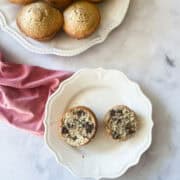



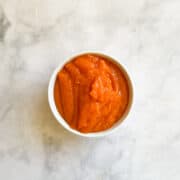





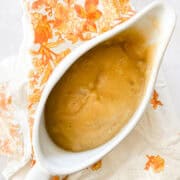
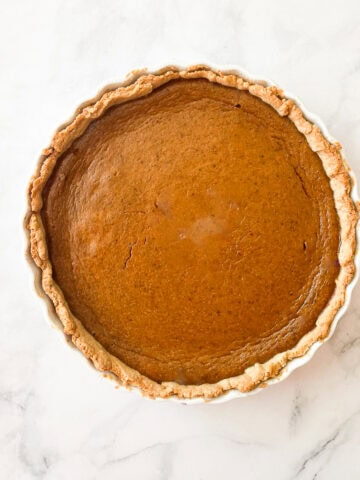

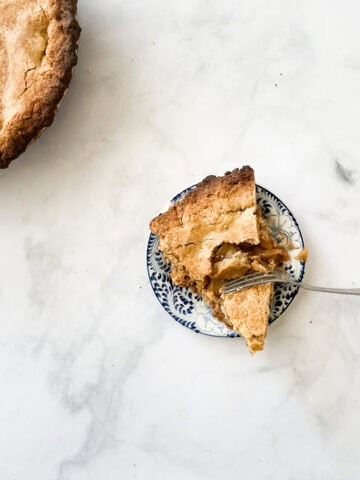

April Bean says
Does this need to be baked prior to use?
Nicole Spiridakis says
Great question. It depends on your recipe - for a custard based pie, like pumpkin pie, yes it's a good idea to blind-bake. For a fruit pie like an apple pie you don't need to bake it ahead of time. I added a note in the recipe card and text to answer this!